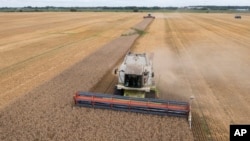“After more than a decade of progress fighting chronic hunger and malnutrition after the 2009 global food crisis, a series of unprecedented shocks have reversed many of our gains, including COVID-19,” said Dina Esposito, Assistant to the Administrator for the U.S. Agency for International Development's Bureau for Resilience, Environment, and Food Security.
The war in Ukraine, ongoing conflicts in Sudan, Ethiopia, Yemen and now Gaza means that today, 735 million people are chronically hungry, said Ms. Esposito in recent Congressional testimony:
“That's 120 million more than in 2019. Pre-COVID, 140 million people in the most vulnerable countries are acutely hungry. They are victims of conflict or compound crises that have upended their livelihoods, and they must depend on humanitarian assistance to survive.”
At the height of the global food crisis in 2022, USAID was able to provide nearly $20 billion in humanitarian assistance, of which 6 billion was for emergency food assistance, explained Ms. Esposito.
“Beyond making our dollars stretch further in emergency situations, we must continue investments that we know prevent hunger in the first place, investments that have had meaningful success. In the areas where Feed the Future, the U.S. government's signature Global Hunger Initiative, has worked, poverty, hunger and child stunting all declined by 20 to 25 percent in its first decade of work.”
But we do not rest on these results, declared Ms. Esposito. In 2022, with a doubling of their annual budget, USAID undertook a massive effort to harness Feed the Future, to feed the present:
“As food prices hit record highs following Putin’s invasion of Ukraine, we rushed to get high quality seeds, fertilizer and financing to the markets and into the hands of some of the world's poorest farmer farmers, helping absorb the worst effects of the food crisis by strengthening local production.”
Without American leadership global food security would be far worse, noted Ms. Esposito. “Looking forward, bending the hunger curve downward will require us to better anticipate, rather than only react to future shocks, and continue to make long term agricultural investments, enhancing our own economic well-being and fostering a safer and more secure world in the process.”














